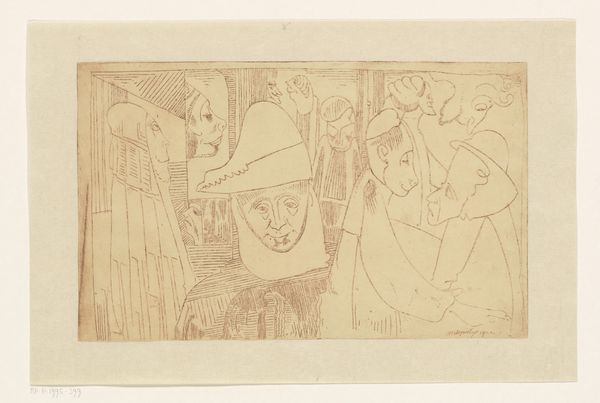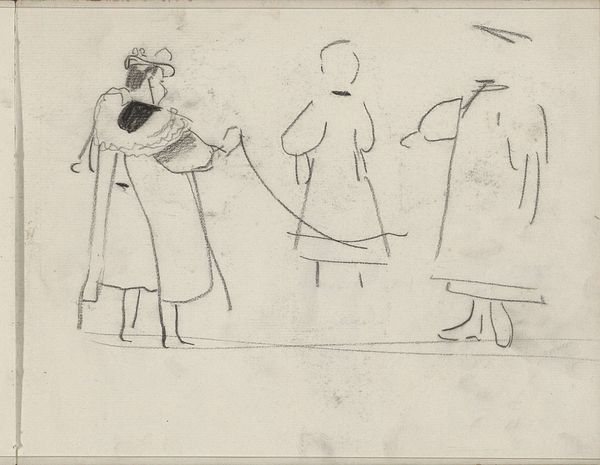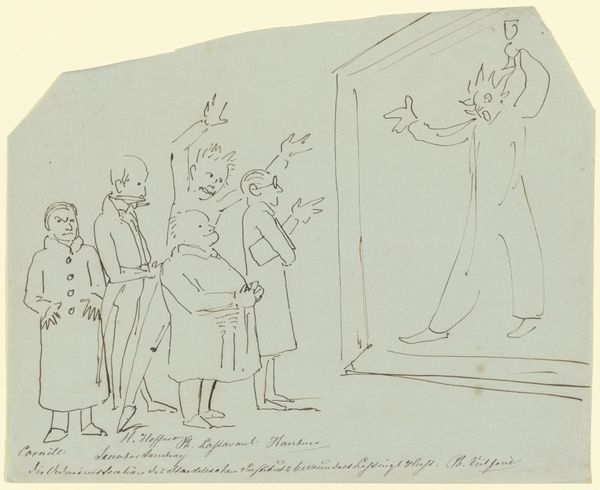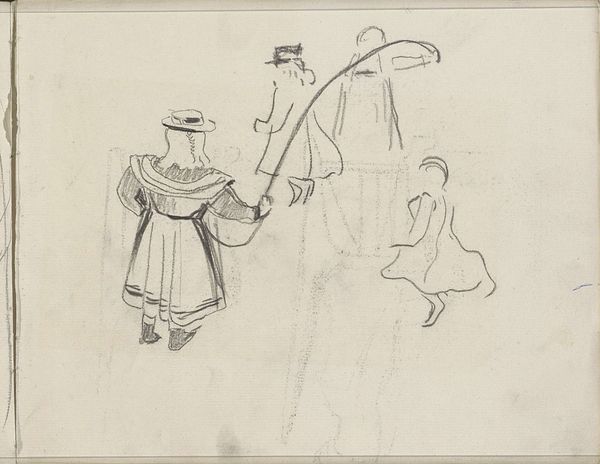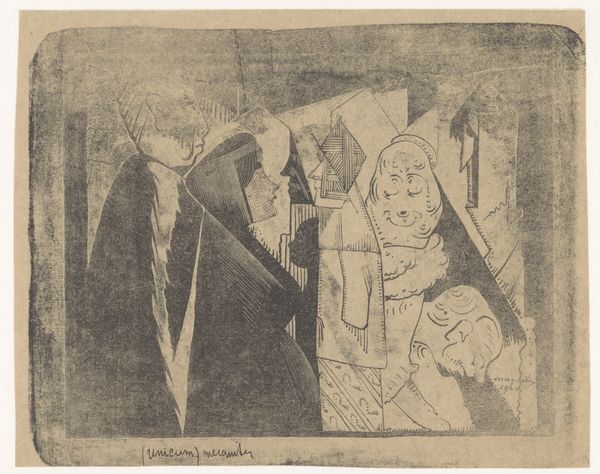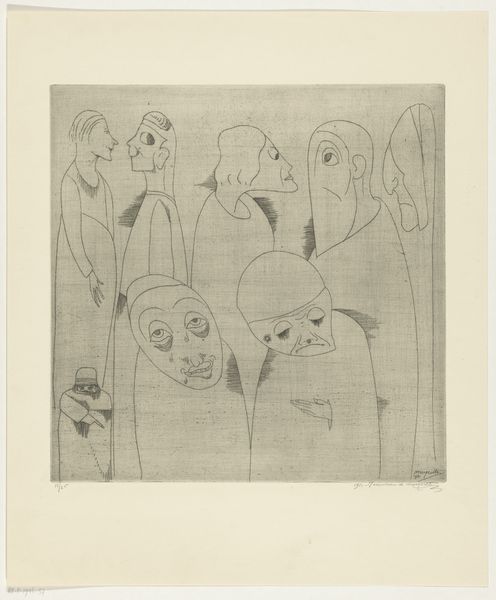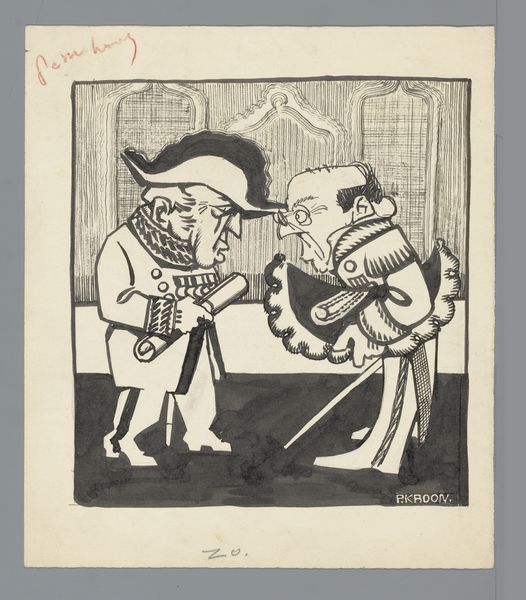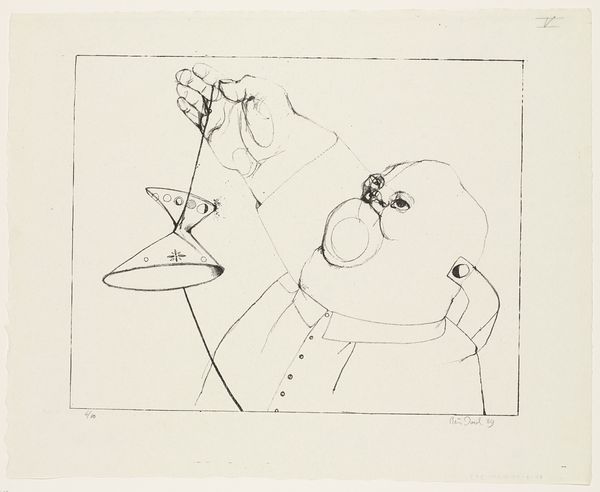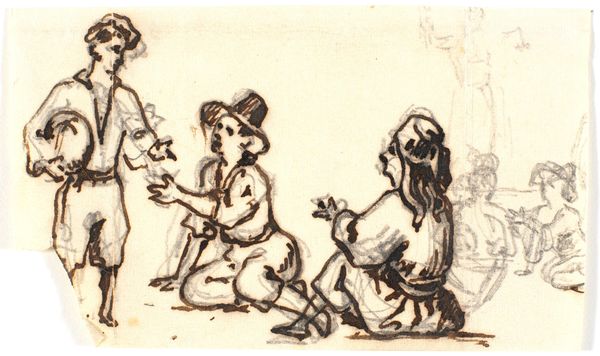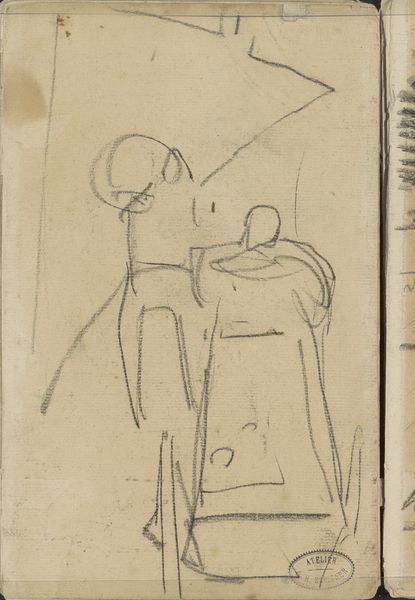
Fantasie: links drie figuren naar rechts, rechts een frontale Chineesachtige gestalte 1920
0:00
0:00
samueljessurundemesquita
Rijksmuseum
drawing, paper, ink
#
drawing
#
caricature
#
paper
#
ink
#
geometric
#
modernism
Dimensions: height 255 mm, width 310 mm, height 215 mm, width 290 mm
Copyright: Rijks Museum: Open Domain
Curator: Immediately, the figures evoke a theatrical, almost ritualistic atmosphere. Editor: This intriguing drawing, created around 1920 by Samuel Jessurun de Mesquita, is titled "Fantasie: links drie figuren naar rechts, rechts een frontale Chineesachtige gestalte," now held here at the Rijksmuseum. It’s rendered in ink on paper. Curator: "Fantasie…" it suits it. I find myself drawn to the lone figure on the right. The “Chineesachtige gestalte”, as the title indicates. His stylized beard and conical shape, give him the weight of a timeless symbol. Editor: Exactly. Look at the context. This was a period of increased fascination, sometimes bordering on appropriation, with Asian cultures in the West. Artists often employed motifs and perceived cultural attributes for their expressive potential. I wonder how much Mesquita understood the symbolism he borrowed, if at all? Curator: Precisely! What interests me is that in the artist's other works, his Sephardic identity and personal life seem absent, although art was part of the social fabric and discourse, with debates about identity and tradition at play, including how "Jewish" art could or should manifest. This piece, and indeed others in the collection, almost wilfully avoid this socio-political discourse, don't you agree? Editor: Interesting observation. I do think the contrast between the clustered group on the left—slightly caricatured, perhaps even mildly grotesque—and the stoic, almost monumental figure on the right is crucial. The three seem caught in dialogue, whilst the solitary figure is an ancient observer removed and timeless. Note how the geometric simplification and line work lend a modern sensibility and amplify the drama. Curator: Absolutely. Mesquita had an impressive capacity to evoke and yet obfuscate symbolism, he draws our eye using stereotypes that may not necessarily signify the artist's own opinions, leaving it to us to interpret. He perhaps also recognised the danger of having a socio-political narrative imposed upon an artists and their works? Editor: So much remains unknown when you look at artworks across time, isn’t it? Mesquita certainly leaves us plenty to think about today in Rijksmuseum’s presentation. Curator: Indeed, he invites us into a fantasy, both in title and in the piece itself, where we're left to assemble its symbols and significance.
Comments
No comments
Be the first to comment and join the conversation on the ultimate creative platform.
